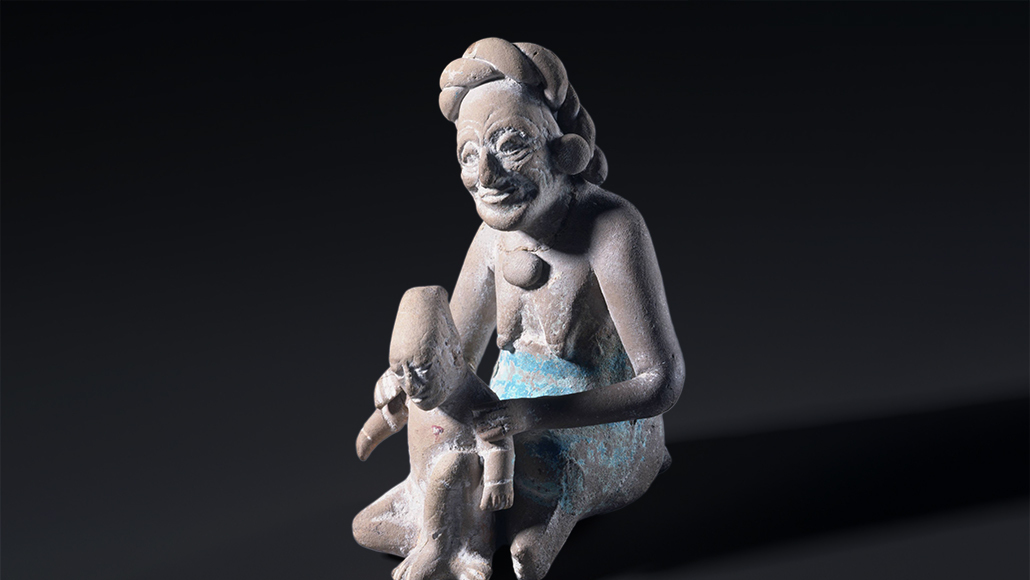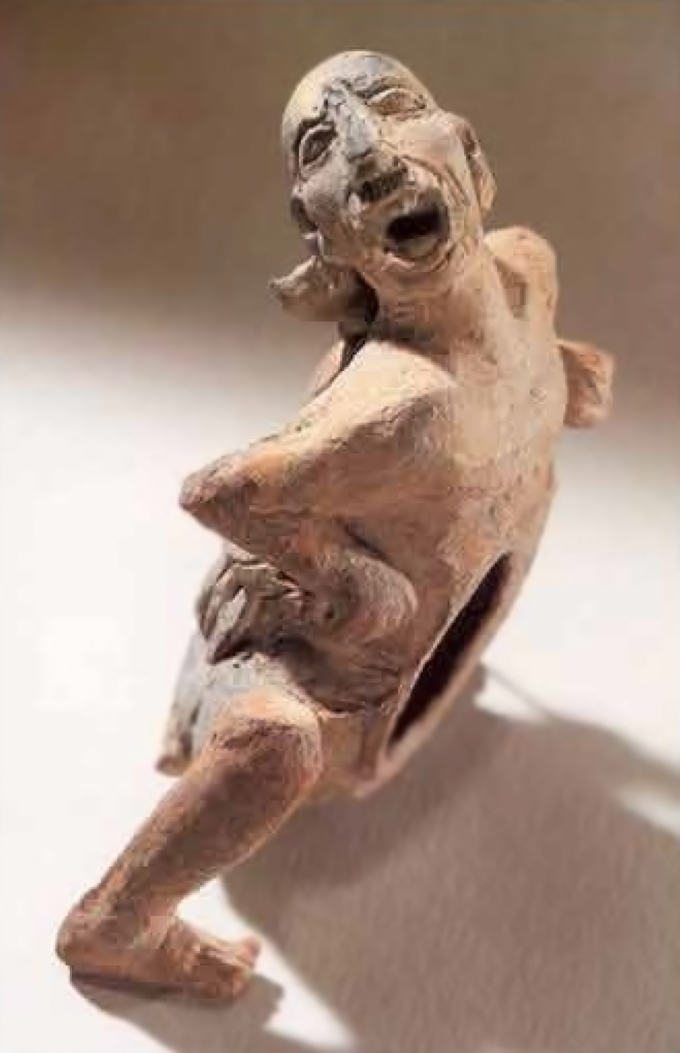
A roughly 1,200- to 1,400-year-old sculpture from a Mexican site shows a beaming Maya woman holding a child. The woman’s glowing look contributed to a study concluding there are universal facial expressions.
Princeton University Art Museum 2003-26, gift of G.G. Griffin
Grimaces, scowls and doting gazes of ancient human sculptures indicate that there are universal facial expressions that signal the same emotions across cultures, researchers argue.
Faces depicted in sculptures crafted between 3,500 and 600 years ago in Mexico and Central America convey five varieties of emotion to Westerners today, say computational neuroscientist Alan Cowen and psychologist Dacher Keltner, both of the University of California, Berkeley. Present-day folks, and likely members of ancient American societies as well, anticipate that each of these emotional expressions occurs in particular social situations, the scientists report August 19 in Science Advances.
As participants in the new study predicted just by looking at the faces of sculpted individuals, pain expressions characterized sculptures of people being tortured, expressions combining determination and strain accompanied heavy lifting, angry faces occurred in combat, elated expressions appeared in people being held or embraced and sad faces typified individuals in defeat.
That link between ancient and modern groups “provides strong support for universality and genetic origins of these [particular] emotion expressions,” says psychologist Jessica Tracy of the University of British Columbia in Vancouver.
Cowen and Keltner regard their findings as a preliminary glimpse of how people who lived long ago, and who had no exposure to any modern culture, expressed certain emotions with their faces as Westerners now do. Researchers have argued for decades about whether certain facial expressions have evolved to express specific emotions, such as happiness, anger and disgust, regardless of one’s culture. Previous comparisons of facial expressions across different modern societies have been complicated by the fact that people everywhere, including hunter-gatherers, have to some extent encountered Westerners and been influenced by their cultural practices. By looking deep into the past, the new study gets around that problem, the researchers say.
The investigators first identified 63 ancient American sculptures from museum collections portraying people in eight situations — being held captive, being tortured, carrying a heavy object, embracing someone, holding a baby, preparing to fight, playing a ballgame and playing music. Sculptures came from ancient societies that included the Olmec and the Maya (SN: 6/3/20).
A total of 325 English-speaking participants, averaging nearly 36 years old, viewed images of each sculpture’s face without being able to see the rest of the sculpture or discern its context. Volunteers, recruited from Amazon Mechanical Turk, Amazon’s online hiring site, rated either the extent to which faces portrayed 30 emotions, such as awe and anger, or the extent to which faces displayed 13 broader emotional states, such as pleasantness and alertness.
Another 114 participants rated the extent to which someone described in written accounts of each of the eight situations depicted by the sculptures would express the same 30 emotions or 13 emotional states.
Sculptures’ facial expressions generally aligned with what participants expected to see in each situation. On average, for example, facial expressions of pain and distress clustered among sculpted individuals shown being tortured, in line with what Westerners predicted would occur.

These findings suggest that facial expressions have evolved to convey a richer variety of emotions than scientists have often assumed, Cowen says. For instance, a well-known system that categorizes seven basic emotions communicated by the same facial expressions in all cultures does not include expressions of pain and of the combination of determination and strain.
Although Cowen and Keltner deserve credit for taking a novel approach to studying facial expressions, the results won’t quell debate over whether certain expressions communicate the same meaning across cultures, says psychologist Deborah Roberson of the University of Essex in England.
English speakers today hold consistent assumptions about how emotional facial expressions should be deployed, as the new study shows, Roberson says. But ancient American cultures likely put distinctive spins on nonverbal emotional communication that researchers today may never be able to recognize, she contends.
Yale University psychologist Maria Gendron agrees. Even today, emotional meanings of faces may not translate across cultures, she says. For instance, Trobrianders of Papua New Guinea perceive anger and threat in the same wide-eyed, gasping faces that Westerners view as expressions of fear.
People living in small, relatively isolated communities, such as Himba farmers and herders in southern Africa, often rank facial emotions differently than Westerners do if asked to describe on their own what a facial expression shows, Roberson says. In such traditional societies, everybody knows each other well, so there is no need to assume that facial expressions reflect particular emotional states, she argues. “If someone is mean and grouchy most of the time, you are likely to be wary of them even when they’re smiling.”







